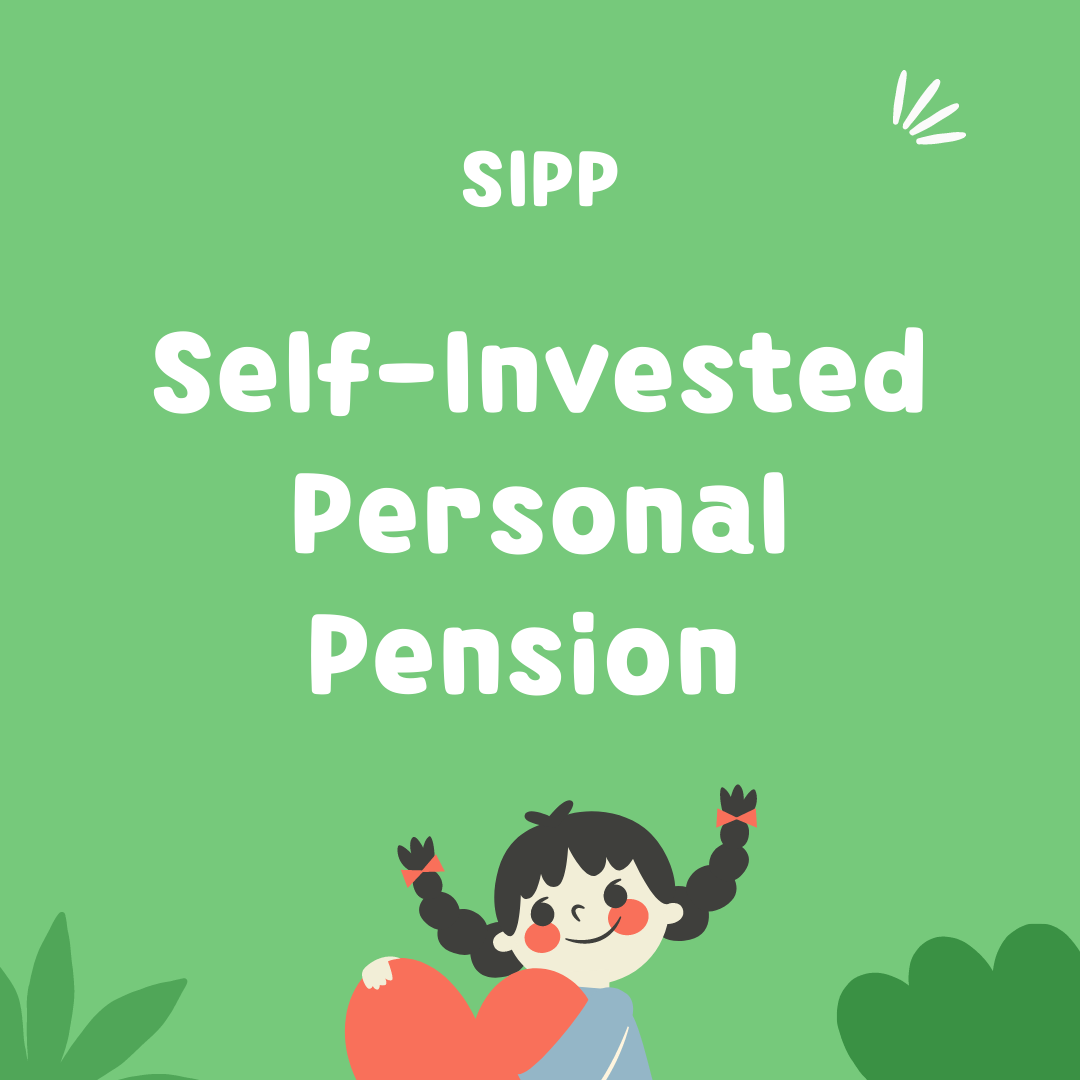A SIPP is a Self-Invested Personal Pension (SIPP), it is what it says on the can. It is a type of personal pension that works in a similar way to your standard personal pension, like the one you get from your employer.
It is a means through which you save, invest and build up a pot of money for when you retire which is accessible when you turn 55 years in the UK (increasing to 57 by 2028).
A SIPP is an effective way of boosting your retirement savings.
Given that it cost you £8,000 to have £10,000 in your SIPP due to the government top up, it sounds like it’s a pretty good idea to make these tax-free investments .
How Is A SIPP Different From Your Standard Personal Pension?
The main difference between your standard personal pension and your SIPP is that your SIPP gives you more flexibility to choose what your money is invested in.
With a SIPP you choose and manage your own investments or pay an authorised financial adviser to do it for you. You can add and change what you invest your money in as often as you want.
With a SIPP you can invest in shares, investment trusts, collective investments, property (but not most residential properties).
With SIPP you can invest a lump sum or make a regular contribution by completing an order form with your Pension’s provider.
How Much Can You Invest In Your SIPP?
There is a limit to how much you can contribute to your SIPP and how much tax relief you can get in any given year.
While there is no limit on how much you can build up in your pension fund, the lifetime allowance in the tax year 2021/2022 is £1,073,100. This allowance will remain until the 2025/2026 tax year, and you will not get tax relief and might have to pay a tax charge if you exceed the lifetime allowance.
To hit this lifetime allowance, you can contribute up to 100% of your earnings to your pension each year or up to the annual tax relief allowance of £40,000 per year. You can also use your unused annual allowance from the last three years, totaling up to £120,000. This means if you have not paid into your SIPP in the last 3 years you are entitled to a tax relief on your invested amount. We will discuss how the tax relief is calculated shortly.
The key thing to note though is that you can only receive tax relief up to 100% of your earnings.
However, if you earn £200,000 a year or more, the limit to invest into a pension – known as the “annual allowance” – gradually falls, until it is just £10,000 a year.
The other thing to remember is that this allowance is not for each pension pot you own, the allowance is applicable across both your SIPP and standard employer pensions. Be careful not to exceed this limit as there will be tax consequences.
Why Should You Pay Into Your SIPP?
1. It Puts You In Control
The number one reason you should put some money in your SIPP is because it puts you in control. Your SIPP puts the decision making in your hand – you get to decide what to invest in, how, and when.
2. You Get Tax Relief
The second most amazing thing about SIPP is that it qualifies you for tax relief.
Many people only invest into their pensions the maximum their employer contributes, but the good news is that with a SIPP you can make more. This time the government contributes.
The government boost the contribution you make to your SIPP.
For example, if you contribute £1,000 to your SIPP and you are a basic-rate taxpayer, the government will contribute an additional 20%, so a total of £1200 will be invested in your SIPP.
If you are a higher-rate taxpayer and contribute £1,000 into your SIPP, you can claim from the government the original 20% of the basic rate taxpayer claims as well as an additional 20%, so a total of 40% = £1,400 will be invested in your SIPP.
If you pay 45% tax, then you can claim from the government the original 20% of the basic rate taxpayer claims as well as an additional 25% you can claim the government will contribute a total of 45%.
The maximum tax relief you can get through your self assessment tax return is 40% for a higher rate taxpayer and 45% for an additional rate tax payer. A basic taxpayer will get the 20% as standard as it will be claimed by your provider on your behalf. It is still worth checking that this happens.
3. You Can Continue To Contribute Even Without A Job
Even if you stopped working you can continue to contribute to your SIPP and benefit from tax relief.
4. Your Baby Qualifies
Your baby can have a pension. Currently. you can contribute up to £2,8880 into your baby’s Junior SIPP up until they turn 18 years.
The best part of it is that the government adds an additional £720 for every £2,880 you contribute, bringing it to a total of £3,600 invested.
5. You Can Transfer To Loved Ones Without Being Liable For Tax
If you die before the age of 75 you can transfer your SIPP to your loved one within two years of your death without having to pay inheritance tax. The catch is for your loved ones to claim it within the two-year period.
How To Claim The Tax Relief On Your SIPP?
If you pay more than 20% tax which means you are a higher taxpayer, you will need to actively claim your tax relief through your self assessment or directly from the HMRC.
To claim through self assessment, you go to government website and complete the online form which asks for certain information including the exact amount of your contribution.
You can also claim by writing to the HMRC tax office.
Can I Claim Tax Relief For Previous Years?
You can also claim back tax relief for the last four tax years so it is worth checking if you have been a higher rate taxpayer so you can claim the maximum contribution from the government.
Who Can You Open A SIPP WIth?
There are various pension providers you can open your Sipp with. The common ones includes ;
The key things I consider when opening a SIPP are;
- The ease of opening a pension account
- The ease of paying into the pension either via lump sum or regular contribution
- The fees the providers charge – platform fee, dealing fees, transfer fees. etc
- The ease of contributing money directly from an employer into the SIPP.
I have my pension with Vanguard and Invest Engine because they ticked my key considerations above and most importantly for me, Vanguard allows me to contribute directly from my employer via a direct order and do not charge any additional fees when I start withdrawing my money (off course this is subject to change).
How To Take Money From Your SIPP?
At the age of 55 (57 from 2028), you can begin taking money from your pension pot.
You can do so via one or more of the following ways
- Keep it – There is no immediate need to take from your pension immediately you hit 55, you can keep your money until you are ready and take it later. You can allow your compound interest to keep working and apply key timing to save on taxes
- Take part of it – either in installment drawdown or a percentage at lump sum. You can take up to 25% of your pensions as a one-off tax-free lump sum
- Take it all in one go – you need to be careful when you do this and consider if the tax implication of taking it out is higher than what you want to use it for as only the first 25% of withdrawal from your pension pot is tax free.
Need further information on why you should invest for the future in a pension pot read this grim news on pensions and how people might have to work until they are 70.
*This is not financial advice. Do not consider this blog to be a substitute for obtaining advice from a qualified investment advisor. The ideas and strategies should never be used without first assessing your own personal and financial situation, or without consulting a financial professional*

